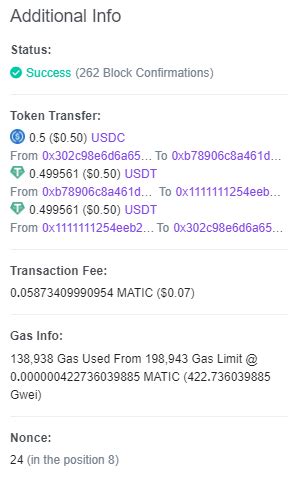Learning Metamask to Generate Correct Swap Call Data with 1 Inch API
While building your decentralized exchange (DEX) with 1 Inch API, you will likely encounter issues generating swap call data. This article will guide you to understand when to use Wei (WEI) and what parameters are required for successful swap calibration.
Understanding Call Data and Swap Calibration
Calldata is a serial representation of function calls that can be executed on the blockchain network. In the context of DEXs, calldata refers to the bytecode of the contract functions used in swaps. Swap calibration is the process of generating the bytecode using 1 Inch API, ensuring that it conforms to the intended functionality.
Modes vs. Actual Number of Tokens

The choice between Wei and actual token amounts depends on your specific use case:
- Wei (WEI): When working with large numbers or complex calculations, using Wei is a simple approach. This method allows you to work directly with numerical values without having to worry about the token balance.
- Actual Token Amount: For smaller swaps or fractional amounts, it is often more convenient and cost-effective to use the actual number of tokens involved.
Calldata Generation Parameters
To generate swap call data using the 1inch API, you need to specify the following parameters:
| Parameter | Description |
| — | — |
| “to” | The address of the contract that will receive the token |
| “from” | The address of the contract that will send the token to |
| “amount0” | The amount of tokens sent (WEI) |
| “amount1” | Amount of Token Received (WEI) |
When generating call data, you should also consider the following:
- Type: Make sure to specify the correct type for each parameter. For example, if you are sending an Ethereum-based token, use “0x…”. If it is a custom token or non-fungible asset, specify the full address.
- GasPrice: Set the gas price according to the target network and block height.
Sample Use Cases
Here is an example of generating swap call data using the 1inch API:
const { Web3 } = request('web3');
const {callSwapCalldata } = request('@1inch/api');
// Replace with your contract addresses
const toAddress = '0x...';
const fromAddress = '0x...';
const amount0Wei = 100; // Amount of tokens sent (WEI)
const amount1Wei = 50; // Amount of tokens received (WEI)
// Set gas price and block height
const gasPrice = 20;
const blockHeight = 123456;
// Create a new Web3 instance
const web3 = new Web3(new Web3.providers.HttpProvider('
// Generate exchange call data
calculate ExchangeCallData(FromAddress, FromAddress, amount0Wei, amount1Wei, gasprice, blockHeight)
.then(calldata => console.log(calldata))
.catch(error => console.error(error));
Conclusion
Learning how to use Wei and the actual token amount is key to successful swap calibration with the 1-inch API. By understanding the call data generation parameters and using an approach that suits your specific needs, you will be able to generate the exact swap bytecode that suits your needs.
